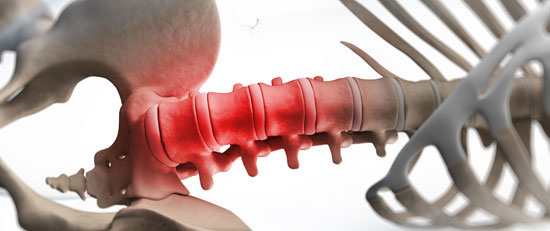
What Is Happening To My Back To Cause My Pain?
By Sherwin Nicholson | Updated May 1, 2020
Factors affecting your chronic pain
At any given time, you may have at least one factor affecting you. This includes the amount of time that you spend, the intensity, and especially the way in which your perform your activity that will determine the pain.
Your sources of discomfort will also change as your activity changes, making it harder to diagnose and treat.
Although some problems are preventable, others may not be. These factors listed can lead to direct injury to the spine or lower back, accidents or even illness.
Here are some preventable factors that affect you:
Physical Strain and Stress on your Muscles, Joints and Ligaments
Examples of strain and stress are:
-
- intense exercise beyond your normal limits
- exercise without adequate training or conditioning
- improper lifting technique
- repetitive use of a particular muscle group
- unhealthy body weight
- sedentary lifestyle, extended sitting
Mental and Emotional Stress
Stress impacts your body. This causes increased muscle tension. Your lumbar spine is particularly prone to this because it is usually in a state of contraction while trying to support your weight.
Stress causes unnecessary tightness and fatigue to this area and reduces our ability to relax the muscles.
Emotional stress and stressful events almost always result in immediate physical tension and a tightening of the lower back. This tension can remain well beyond the time that we experienced the stressful event.
Muscular Imbalances
Muscles that are tight, short, weak, overstretched and poorly conditioned will certainly increase your risk of pain. They have to support both sides of your spine to be balanced so they can protect the vertebrae and disks. Imbalances lead to disk pain and possible rupture.
Your facet joints are vulnerable to excessive pressure from muscle imbalances. Wear and injury can trigger further discomfort and back spasms. Reconditioning them with effective exercise is vital to correcting these imbalances.
Direct Spinal Injury and Accidents
Accidents such as slips, falls or injury from heavy physical exertion are a common cause. An acute injury that is not treated appropriately and resolved may lead to a chronic problem and further harm. An injury in the past that has not yet sufficiently healed or correctly may return to aggravate your body.
Your back can withstand a lot of abuse before you begin to notice and wear and injury. Therefore, when you feel any discomfort, you should be careful as there is already damage occurring which may require special care.
Disc Problems
Acute and chronic back problems can lead to disc injury and wear. Disc bulge, rupture, herniation, tear and thinning are serious concerns that may require medical attention. These injuries lead to increased pressure on the nerves of our spinal canal and increase wear on the facet joints of the vertebrae. Exercise will help to stabilize and control any harmful movement to this area.
Facet Joint and Bone Degeneration
Wear to the facet joints and vertebrae is another source of pain. Wear usually accompanies them and thinning of the lumbar discs. These areas of wear are typically part of the aging process. Poor diet, exercise, conditioning and treatment may accelerate this process.
Nerve Problems
Nerve issues occur along with skeletal damage as mentioned above and also accidental or direct injury. Disc wear and thinning lead to progressive narrowing or impingement of the nerves that travel through the spinal canal and also the nerve roots that exit from it.
This can cause:
-
- nerve pain
- numbness
- tingling sensations that travel out from the area of concern
- radiating pain
- the sensation of pins and needles
- a poorer function of tissues and organs that receive nervous supply from the nerve
- sciatica
- spinal stenosis
- cauda equine syndrome
To help you:
Try these safe and easy exercises to feel better
Sitting all day at work can be risky
Lower your risk with this easy tip
Are you ready for more? Start the program today. It will make all the difference for you!
